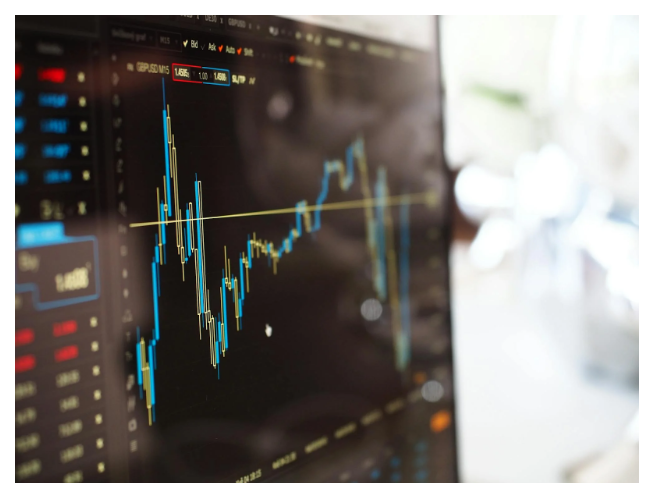Top 10 Trading Strategies for Maximizing Profits in 2024
As the financial landscape evolves, traders must adapt their strategies to stay ahead in 2024. The top 10 trading strategies for maximizing profits this year encompass a diverse range of approaches, from high-frequency algorithmic trading to patient value investing. Each method offers unique advantages, catering to different risk tolerances, time horizons, and market conditions. By understanding and implementing these strategies, traders can potentially enhance their portfolio performance and navigate the complexities of today’s markets. However, the key to success lies not just in knowing these strategies, but in mastering their application and timing.
Algorithmic Trading
Increasingly, sophisticated traders are leveraging algorithmic trading to automate their investment decisions and execute trades with lightning speed and precision.
These computer-driven strategies analyze vast amounts of market data, identifying patterns and opportunities that human traders might miss.
Algorithmic trading can exploit price discrepancies, manage risk, and implement complex strategies across multiple markets simultaneously, potentially leading to higher returns and reduced emotional bias in decision-making.
Trend Following
Trend following is a popular trading strategy that aims to capitalize on the momentum of established market movements, whether bullish or bearish.
This approach involves identifying and riding strong market trends, using technical indicators and price action analysis to determine entry and exit points.
Traders employing this strategy typically hold positions for extended periods, allowing profits to run while cutting losses short, in line with the adage ‘the trend is your friend.’
Swing Trading
Swing trading is a dynamic strategy that capitalizes on short- to medium-term price movements, typically lasting from a few days to several weeks.
Traders aim to capture ‘swings’ in asset prices, entering positions at the beginning of a potential upward trend and exiting when it shows signs of reversal.
This approach requires keen market analysis, technical indicators, and the ability to identify key support and resistance levels.
Scalping
Unlike swing trading, scalping is an ultra-short-term trading strategy that aims to profit from minimal price changes, often executing dozens or even hundreds of trades within a single day.
Scalpers capitalize on small price movements, typically holding positions for seconds to minutes.
This approach requires quick decision-making, advanced technical analysis skills, and a deep understanding of market microstructure.
Successful scalping demands low-latency trading platforms and the ability to manage high-frequency trades efficiently.
Value Investing
While scalping focuses on rapid-fire trading, value investing takes a fundamentally different approach by emphasizing long-term holdings based on thorough analysis of a company’s intrinsic worth.
This strategy involves identifying undervalued stocks through financial statement analysis, industry research, and competitive positioning evaluation.
Value investors seek companies with strong fundamentals, consistent cash flows, and potential for future growth, aiming to capitalize on market inefficiencies and realize substantial returns over extended periods.
Momentum Trading
Momentum trading capitalizes on the continuity of existing market trends, with traders seeking to profit from the sustained movement of asset prices in a particular direction.
This strategy involves identifying and riding strong price trends, often using technical indicators like moving averages and relative strength index.
Momentum traders typically hold positions for short to medium terms, swiftly entering when upward momentum is detected and exiting when it wanes to maximize gains.
Pairs Trading
Exploiting the correlation between related securities, pairs trading is a market-neutral strategy that seeks to profit from the relative price movements of two assets.
Traders identify historically correlated pairs, such as stocks in the same sector, and take long positions in underperforming assets while shorting overperforming ones.
This approach aims to capitalize on temporary price disparities, regardless of overall market direction, making it attractive for risk-averse investors.
Breakout Trading
In contrast to the market-neutral approach of pairs trading, breakout trading focuses on identifying and capitalizing on significant price movements that breach established support or resistance levels.
This strategy involves:
- Monitoring key price levels and chart patterns
- Entering trades when prices break through these levels
- Setting stop-loss orders to manage risk
Successful breakout traders combine technical analysis with volume indicators to confirm trend strength and avoid false breakouts, potentially capturing substantial profits from sustained price movements.
Position Trading
Position trading represents a long-term approach to the financial markets, where traders hold assets for extended periods to capitalize on broader market trends and macroeconomic shifts.
This strategy involves thorough fundamental analysis, patience, and a high tolerance for short-term market fluctuations.
Position traders focus on identifying major trend reversals and aim to capture substantial price movements over weeks, months, or even years.
Risk management is essential, often employing wider stop-losses and smaller position sizes.
Arbitrage
Arbitrage represents a sophisticated trading strategy that capitalizes on price discrepancies of identical or similar financial instruments across different markets or exchanges. Traders exploit these inefficiencies to generate profits with minimal risk.
Key aspects of arbitrage include:
- Rapid execution to capture fleeting opportunities
- Advanced technology for real-time market monitoring
- Substantial capital requirements for meaningful returns
Successful arbitrage demands precision, speed, and in-depth market knowledge to identify and leverage price differences before they disappear.
Conclusion
In summary, the diverse array of trading strategies available in 2024 offers traders multiple avenues to maximize profits.
From high-frequency algorithmic approaches to long-term value investing, each method caters to different market conditions, risk tolerances, and trading styles.
By understanding and implementing these strategies, traders can effectively navigate market complexities, capitalize on various opportunities, and potentially enhance their overall trading performance.
Continuous learning and adaptation remain essential for success in the ever-evolving financial landscape.



